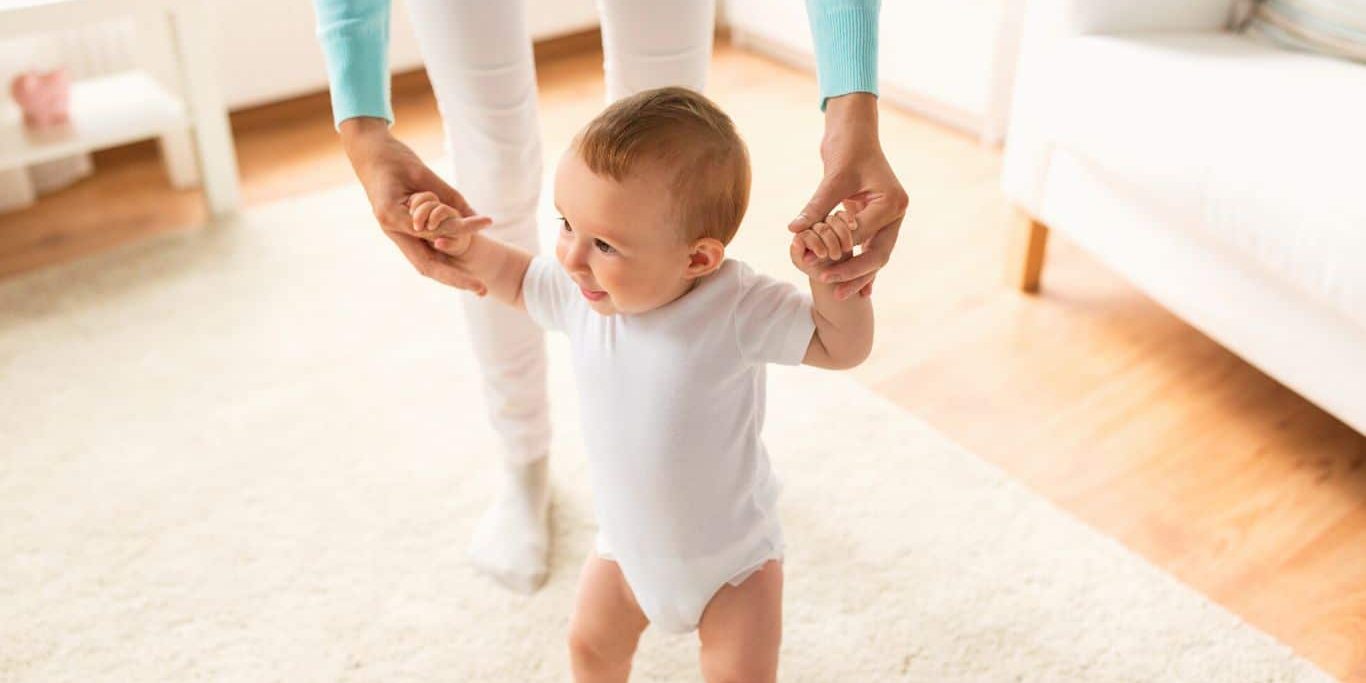You’ve enjoyed the excitement of your baby’s first roll, their first time sitting up and maybe their first crawl, now you eagerly anticipate those super cute and wobbly first steps. Walking is one of the most anticipated milestones by parents and therefore can come with some stress if they perceive their baby to be “behind” in achieving this milestone.
If your baby is older than 1 year old, you’ve probably started to get some questions about whether they’re walking yet or how they’re progressing towards it. It’s a common misconception that babies walk at around 12 months old, so try not to get worried when everyone seems to have this expectation of your baby.
Research shows that most babies start to walk between 8 and 20 months of age (a huge age range!), so your little one has plenty of time to master the skill before you need to think about interventions.
If you want to be sure that you’re doing everything you can to encourage your baby to get walking, we’ve compiled our best tips here.
Signs your baby is ready to walk
Pulling up to stand
Before they can walk, they need to be able to get themselves into a standing position independently. They’ll do this by grabbing onto furniture or the sides of their cot. The more time they spend in a standing position, the more they develop their balance and coordination to help them stand without assistance.
Encourage them to spend more time standing by having their toys on an elevated surface like a play table. If their toys are on the floor, they’re more likely to stay on the floor too.
Cruising
Walking while holding onto furniture, walls, etc. is vital for your baby to develop the balance required for walking and the ability to shift weight from one leg to another. Encourage cruising by placing furniture close together, thus making a little course for your baby to hang onto without the need to drop to their bum. Be mindful of any unstable objects that they might grab onto causing a fall.
Make sure to anchor chests of drawers and other heavy furniture so they don’t tip on your baby as they grab them to cruise along.
Walking with help
Using push-along walkers can be great for developing your baby’s confidence as they offer a small amount of support and your baby still has to balance themselves. It’s also great for learning forward-stepping rather than the side-stepping they’ve been doing while cruising. You can also hold your baby’s hands to help them walk, just make sure to keep their hands low, rather than up over their head and offer minimal support so they’re supporting themselves and developing their leg and core muscles.
Avoid the use of baby walkers. Although the name would suggest that they help babies to walk, they support your baby’s body too much and therefore hinder the development of those strong muscles which hold your baby upright. They are also linked to many accidents and injuries, some countries have even banned their sale!
Standing unassisted
Once your baby’s muscles are feeling strong and coordinated, they’ll be able to start standing without holding onto anything. This may be for a few seconds in the beginning, but they’ll soon be able to do it for longer and longer. Once they can stand on their own for a few seconds, the first steps are not far away! The next step is just mustering the confidence to shift their weight and move their feet.
Bad moods and bad sleep
Learning to walk is a huge developmental leap which can leave your baby feeling exhausted and fussy. This isn’t helped by the fact that it can also come with a sleep regression, leaving you and baby feeling wiped out. Rest assured that it’s all for a good cause and those tiny steps are on their way.
How to encourage your baby’s first steps
- Make them feel good about their progress. Praise them for every attempt they make and make them feel like this is a fun way to get positive attention.
- Baby-proofing your home to make it a safe space for your baby to explore will help prevent any setbacks which may make them hesitant to keep trying, like a bad bump from a fall.
- Try not to helicopter parent. If you’re constantly hovering over them to make sure they don’t fall you create a sense of unease which may make them more nervous about taking off.
Conclusion
Try not to stress about your baby’s first steps. If you’re unsure, talk to your doctor or Public Health Nurse, they can give you guidance about what is considered “late walking” and when interventions are necessary.







